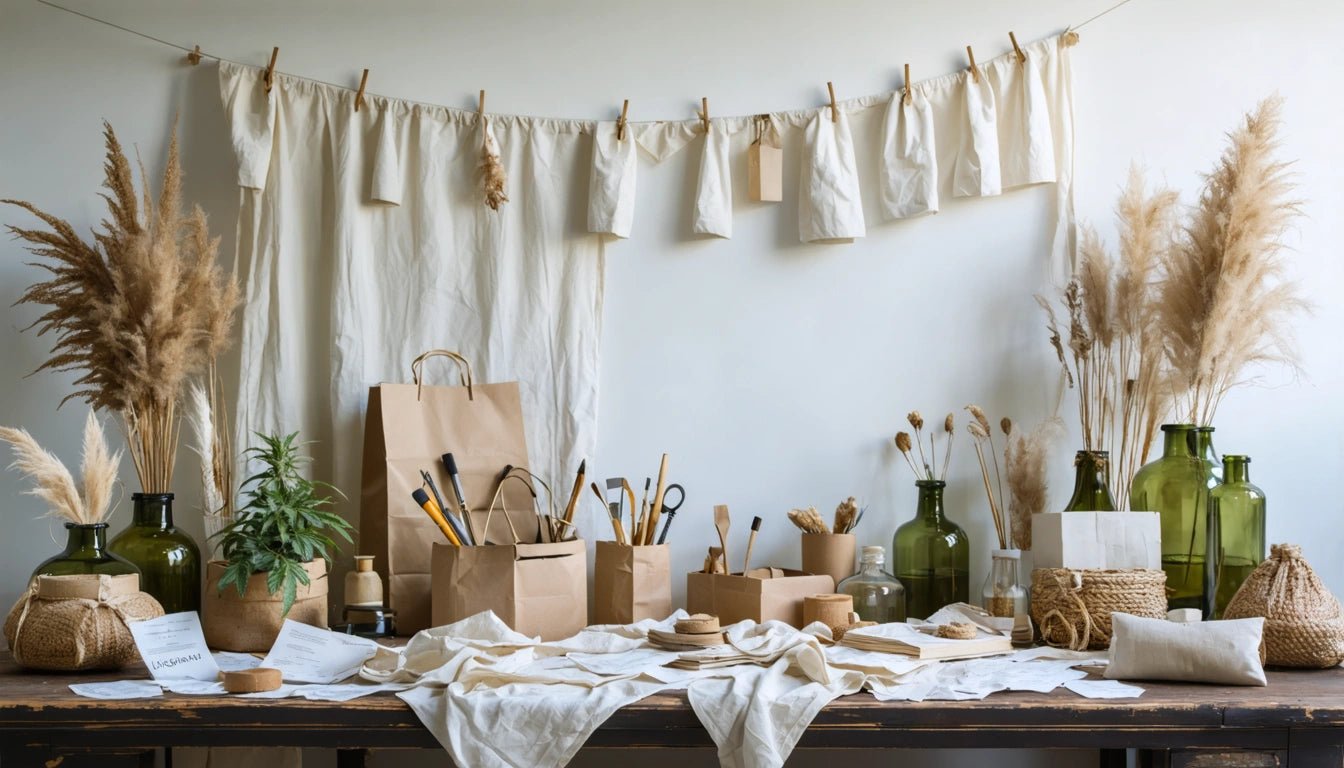Table of Contents
Understanding Muslin Fabric: Composition, Uses, and Applications
Muslin fabric stands as one of the world's oldest and most versatile textiles, with applications spanning from fashion to food preparation and even specialized industrial uses. This lightweight, breathable material has maintained its relevance for centuries due to its practical benefits and adaptability. Understanding what muslin fabric is made of and what muslin is used for provides valuable insights for both consumers and businesses seeking sustainable material options.
What Is Muslin Fabric: Composition and Characteristics
Muslin is a plain-woven fabric typically made from cotton fibers. The defining characteristic of what muslin material consists of is its simple weave structure: one-over, one-under pattern that creates a lightweight yet durable textile. This straightforward construction distinguishes it from more complex woven fabrics like burlap, which features a heavier, coarser weave.
Key characteristics of muslin include:
- Lightweight and breathable texture
- Unbleached, natural appearance in its basic form
- Varying thread counts determining quality grades
- Excellent draping capability
- High absorbency
The composition of muslin primarily features 100% cotton, though modern variations may incorporate synthetic fibers or blends to enhance specific properties. The thread count typically ranges from 70 to 200 threads per inch, with higher counts producing finer, more delicate material.
Historical Significance of Muslin
Muslin originated in the Indian subcontinent, specifically in what is now Bangladesh, with historical records dating back to the 9th century. The name derives from Mosul, Iraq, where European traders first encountered this fine fabric. Historically, muslin was so prized that it became a luxury export item, with the finest varieties reserved for royalty.
During the colonial era, muslin became a significant trade commodity, with European powers establishing production centers to meet growing demand. This historical importance underscores why understanding what muslin fabric is used for has relevance beyond its practical applications, touching on cultural and economic history.
Types of Muslin and Their Specific Uses
Swiss Muslin
Swiss muslin features a higher thread count and often incorporates embroidered patterns or dots. This premium variety is primarily used in fashion for delicate garments, children's clothing, and decorative items.
Sheeting Muslin
Medium-weight and versatile, sheeting muslin serves as the standard for pattern-making in fashion design, theater backdrops, and food preparation. Its neutral characteristics make it ideal for testing designs before using more expensive materials.
Cheese Cloth
Though technically a distinct variant, cheese cloth is closely related to muslin and features a looser weave. It's primarily used in culinary applications for straining liquids, cheese-making, and food wrapping, similar to how cellophane serves as a food packaging material.
Industry Applications for Muslin Material
What is muslin used for in professional settings? The applications span numerous industries:
Fashion and Textiles
In fashion design, muslin serves as a prototype material for testing patterns before cutting expensive fabrics. It's also used in finished garments, particularly in summer clothing, baby products, and undergarments where breathability is essential.
Photography and Film
Photography studios use muslin backdrops because the material absorbs light effectively without creating glare. Its ability to be dyed easily also makes it versatile for different shooting scenarios.
Food Industry
Muslin's food-safe properties make it ideal for straining, filtering, and wrapping food products. Unlike PLA and other synthetic materials, it doesn't leach chemicals into food.
Medical Applications
The medical field uses sterilized muslin for bandages, surgical drapes, and laboratory filtering. Its absorbent nature makes it effective for wound care applications.
Cannabis Industry
In the cannabis sector, muslin has found application in extraction processes and as a filtering medium. Some producers use muslin bags during processing stages, and specialty cannabis packaging suppliers have incorporated muslin elements into sustainable packaging solutions as an alternative to plastic.
Sustainability Profile of Muslin as a Woven Fabric
As a natural fiber product, muslin offers several sustainability advantages compared to synthetic alternatives:
- Biodegradability: Pure cotton muslin decomposes naturally
- Renewable resource: Cotton can be grown and harvested annually
- Low processing requirements: Simple weave requires less energy to produce
- Reusability: Durable enough for multiple uses before disposal
- Compostability: Can return to the soil without harmful residues
These properties align with growing consumer demand for sustainable materials, similar to the interest in cardboard and other plant-based packaging options. However, conventional cotton production does raise environmental concerns regarding water usage and pesticide application, making organic muslin the more sustainable choice.
Future Applications and Innovation in Muslin Fabric
The future of muslin lies in combining its traditional benefits with modern technology and sustainability practices. Emerging trends include:
Organic and fair-trade certified muslin is gaining popularity as consumers become more environmentally conscious. These products ensure that what muslin fabric is made of meets strict ecological and ethical standards.
Technical innovations are enhancing muslin's properties through treatments that add water resistance, antimicrobial properties, or UV protection while maintaining the fabric's essential breathability. This expands what muslin is used for in specialized applications.
The circular economy model is being applied to muslin production, with brands developing systems for recycling and upcycling used fabric. This approach, similar to innovations in natural product manufacturing, reduces waste and extends the material's lifecycle.
As one of the oldest textiles still in common use, muslin demonstrates remarkable adaptability across centuries of changing needs and technologies. Its continued relevance speaks to the enduring value of simple, effective design in material science. Whether serving traditional purposes or finding new applications in modern industries, muslin's fundamental characteristics of breathability, absorbency, and versatility ensure its place in our material landscape for years to come.



















